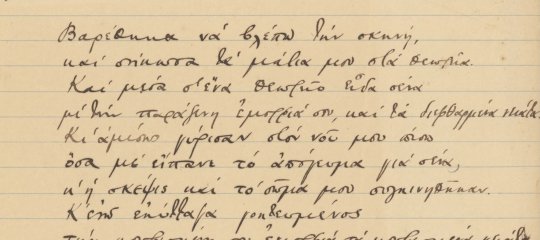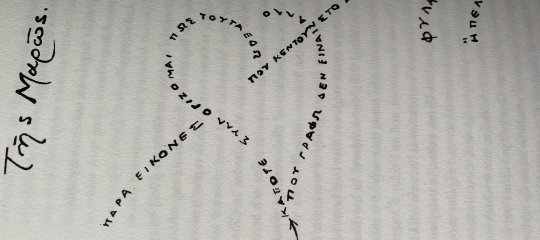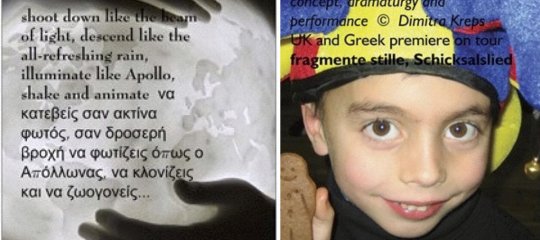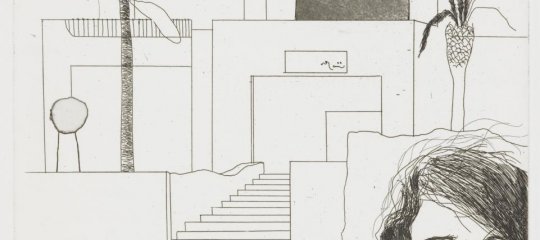Η ΔΙΔΑΣΚΑΛΙΑ ΤΗΣ ΝΕΑΣ ΕΛΛΗΝΙΚΗΣ ΣΤΟ ΠΑΝΕΠΙΣΤΗΜΙΟ ΤΟΥ ΕΛΣΙΝΚΙ
Πιερέττα Διαμαντοπούλου
Το Τμήμα Νεοελληνικών Σπουδών του Πανεπιστημίου του Ελσίνκι υπάγεται στην Έδρα Αρχαίων Ελληνικών Σπουδών του Ινστιτούτου Κλασικής Φιλολογίας και Αρχαιολογίας.
24 Φεβρουαρίου 2005
Οι διδάσκοντες είναι τρεις:
Α. Ο κ. Γιούσι Κόρχονεν, στον οποίο
οφείλεται και η ίδρυση του Τμήματος Νεοελληνικών Σπουδών, το 1967
Β. Ο κ. Κίμμο Γκράνκβιστ, υφηγητής των Νέων Ελληνικών
Γ. Η κ. Πιερέττα Διαμαντοπούλου, φιλόλογος αποσπασμένη από το ΥΠ.Ε.Π.Θ.
Τα μαθήματα που διδάσκονται είναι τόσο γλωσσικής όσο και πολιτισμικής κατεύθυνσης. Πιο συγκεκριμένα αυτά είναι:
ΝΕ Γλώσσα, Γραμματική, Γλωσσολογία, Ιστορία της Γλώσσας, Μετάφραση, Προφορά-Εκφορά του Λόγου, Επιστημονική Γραφή, ΝΕ Ιστορία, Λαογραφία, Επιβιώσεις του Αρχαίου Κόσμου, ΝΕ Θέατρο, Ελληνικός Κινηματογράφος, ΝΕ Ζωγραφική, Χωρογνωσία και, κυρίως, ΝΕ Λογοτεχνία.
Οι εξετάσεις γίνονται με ένα από τους δύο παρακάτω τρόπους κατ' επιλογή του φοιτητή:
Α.Με γραπτές απαντήσεις σε ερωτήσεις - δύο δοκιμιακές και δύο γνώσης -
Β. Με εκπόνηση γραπτών εργασιών, απλών ή
προπτυχιακών.
Το πτυχίο που χορηγείται από το Τμήμα Νεοελληνικών Σπουδών είναι το Β.Α. Από το φθινόπωρο του 2005 θα υπάρχει η δυνατότητα χορήγησης του Ανώτερου Πτυχίου Αρχαίων Ελληνικών Νεοελληνικής Κατεύθυνσης.
Οι ενδιαφερόμενοι για τις νεοελληνικές
σπουδές είναι συνήθως σπουδαστές κλασικών σπουδών ή ιστορίας ή θρησκειολογίας ή διαφόρων άλλων γλωσσών και φιλολογιών. Το ενδιαφέρον τους είναι δυνατόν να πηγάζει τόσο από την επαφή τους, μέσω των σπουδών τους, με την αρχαία Ελλάδα ως σύμβολο του δυτικού
πολιτισμού όσο και από τη σύγχρονη Ελλάδα ως χώρα τουριστικού προορισμού.
Ο αριθμός των σπουδαστών είναι είκοσι οκτώ.
- Εισέλθετε στο σύστημα για να υποβάλετε σχόλια










